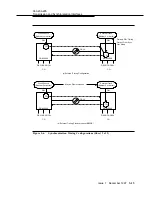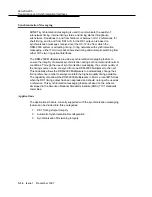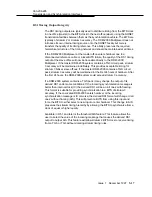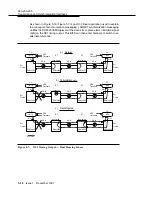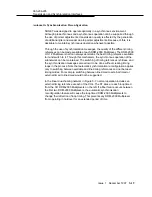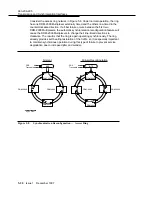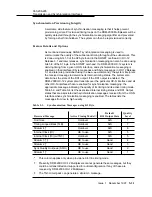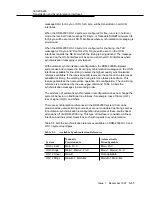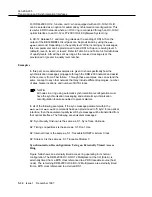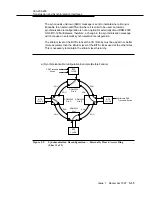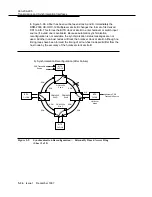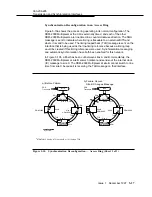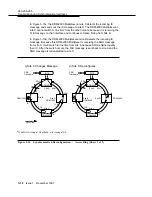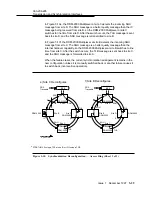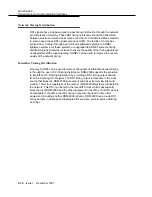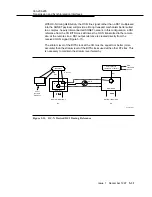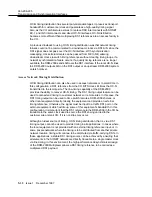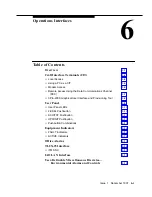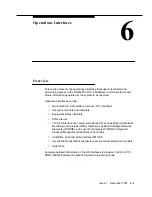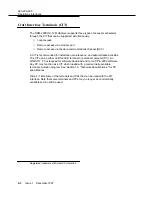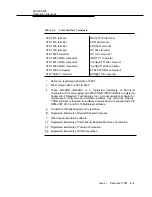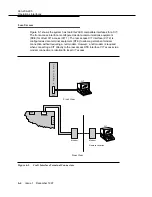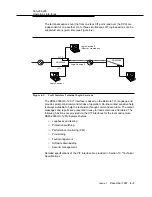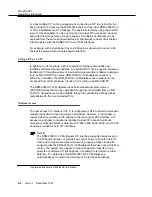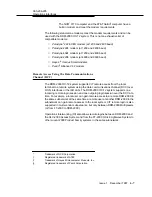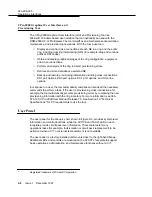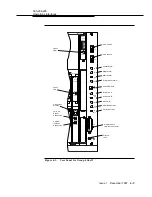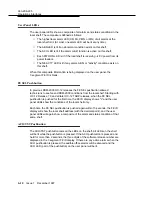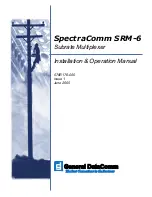
363-206-295
Transmission and Synchronization Interfaces
Issue 1
December 1997
5-29
In Figure 5-10e, the DDM-2000 Multiplexer at site C detects the incoming SQU
message from site D. The SQU message is a better quality message than the IC
message being received from site B, so the DDM-2000 Multiplexer at site C
switches to line time from site D. After the switch occurs, the TLB message is sent
back to site D, and the SQU message is retransmitted to site B.
In Figure 5-10f, the DDM-2000 Multiplexer at site B detects the incoming SQU
message from site C. The SQU message is a better quality message than the
internal holdover capability, so the DDM-2000 Multiplexer at site B switches to line
time from site C. After the switch occurs, the TLB message is sent back to site C,
and the SQU message is forwarded to site A.
When the failure clears, the current synchronization arrangement remains in the
new configuration unless it is manually switched back or another failure causes it
to switch back (nonrevertive operation).
Figure 5-10. Synchronization Reconfiguration — Access Ring (Sheet 3 of 3)
PRS
Traceable
BITS
DDM-2000
DDM-2000
DDM-2000
PRS
Traceable
BITS
Sync Flow
SQU
Site A
Site D
Site B
Site C
SQU
TLB
TLB
SQU
DDM-2000
DDM-2000
SQU
Site A
Site D
Site B
Site C
SQU
TLB
SQU
f) Site B Reconfigures
IC
TLB
e) Site C Reconfigures
SQU
TLB
SQU
SQU
DDM-2000
DDM-2000
DDM-2000
IC
STRATUM 3 if using a TG3 at site B, or IC if using a TGS.
*
*

